How to arrange ventilation ducts in a private house: design rules and construction manual
The microclimate of the house depends on the proper ventilation device, which has a direct impact on the well-being and comfort of all its residents. Properly constructed ventilation ducts in a private house will ensure stable air exchange. They will create conditions for the regular supply of fresh portions and the unhindered discharge of polluted air.
We offer to get acquainted with the specifics of the construction of duct ventilation in low-rise suburban property. We set out in detail the technology of the ventilation system, the placement of equipment, the laying and fastening of ventilation ducts. Proven improvement options are reviewed.
The information submitted for consideration is based on building codes. Based on our recommendations, you can independently build effective ventilation. For visual perception, text, photo guides and video instructions are attached to the text.
The content of the article:
- Private house ventilation options
- Features of the construction of ventilation in a private house
- Choosing the best ventilation system
- When do I need to invite specialists?
- Drawing up a ventilation scheme for the home
- Ventilation duct technology
- The consequences of errors in the device
- Conclusions and useful video on the topic
Private house ventilation options
Ventilation of the premises is necessary in order to create optimal conditions for the life of people and the existence of objects of furniture and equipment located in the house.
If in apartment buildings everything has already been done by the specialists who erected the building, then in the construction of private real estate this issue is often overlooked.
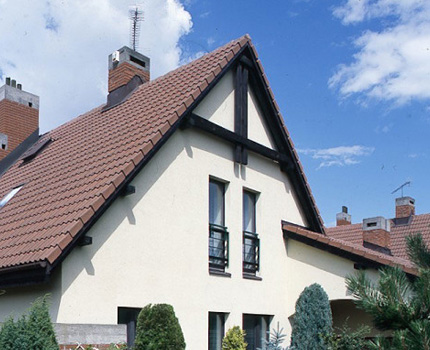
This is a fundamentally erroneous opinion. The musty air, sweating windows, unpleasant odors from the bathrooms and the aromas of fried food along with faint smoke will fall into all rooms and even into the bedroom. Without a properly designed and assembled ventilation system, the comfortable life of the inhabitants of the house will be at risk.
Ventilation in a private house can be:
- natural;
- mechanical;
- mixed.
The first type is based on the natural process of circulation of air masses. No mechanisms are used to pump air into the house. It enters from the street, penetrating through micro-ventilated windows or supply valves, organized in the most suitable places for this.
Through the rooms of the house in which the valves are not installed, air circulates through the doorways and through the cracks between the door and the floor.
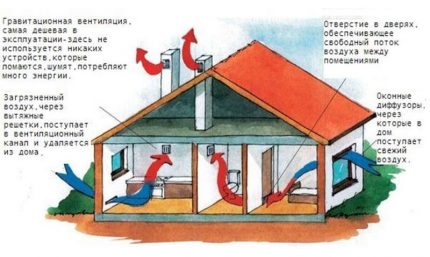
At mechanical type ventilation devices, fans and special supply equipment are used. The required amount of clean air is supplied to each room of the building, and the exhaust is taken out. This is a more complex system used for large country houses and cottages.
A mixed version of ventilation involves the use of the first and second type. This may be the installation of mechanical supply valves in a company with a natural exhaust system for removing air through ventilation shafts in the bathroom and in the kitchen. Or vice versa - the flow is natural, and mechanical equipment is used for removal.
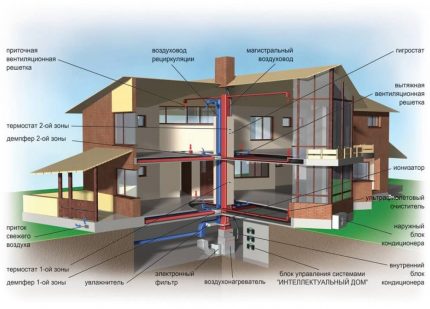
The main advantages of the natural type:
- energy independence;
- the cheapest cost;
- does not require repair;
- minimum maintenance;
- can do it yourself.
In addition to the positive aspects, this type of ventilation has significant disadvantages. If everything was perfect, then other options for arrangement simply would not be used. The main disadvantages are the dependence on air temperature and weather conditions, limited service area.
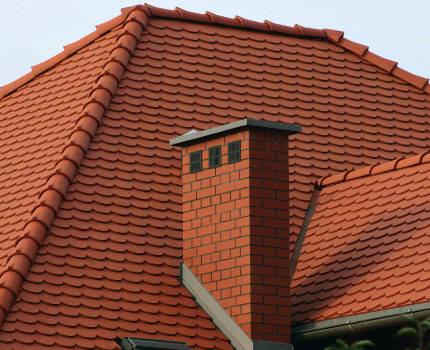
The mechanical system is convenient to use, because it can serve any area of the house / cottage and is completely independent of the weather. Moreover, it can be controlled at your discretion, maintaining a comfortable temperature in the premises.
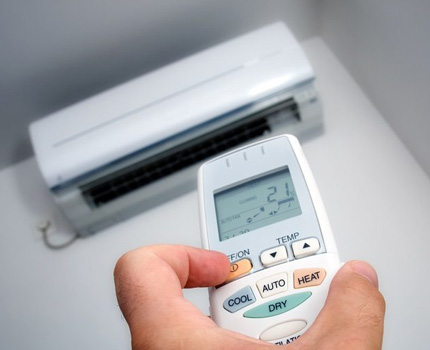
Additional possibilities for heating the incoming air, for ionizing and humidifying the air masses of a room, etc. can be arranged by installing the appropriate equipment in the ventilation system.
The main disadvantages of the mechanical ventilation method:
- higher cost of equipment;
- the need for repair and periodic replacement of individual elements of the system;
- dependence on power supply;
- professional installation and setup of equipment may be required.
Given the positive and negative qualities of the types of ventilation, for country houses and cottages, the mixed type is most often used. This is justified from an economic point of view and is quite do-it-yourself.
Features of the construction of ventilation in a private house
Ventilation in the house must be done correctly. This will save the owner from constant minor troubles, which in total can coolly poison the life of the whole family.
Particularly relevant is the arrangement of ventilation passages in new houses built from vapor-proof building materials with similar thermal insulation. It will be impossible to live here without good forced ventilation.
About the rules for designing a ventilation system for a suburban low-rise building, you can read here.
Rules for the installation of ventilation pipes
A properly equipped ventilation system will perform its functions efficiently and will not create problems for the homeowner. For this, it is important to lay ventilation ducts in the house, taking into account the rules and recommendations.
Firstly, the size of the exhaust duct in the room should be at least 10x10 cm or 15x15 cm in diameter. It is better to use ready-made pipes than to make drywall ducts - this will save installation time, and the air through the pipe is better.
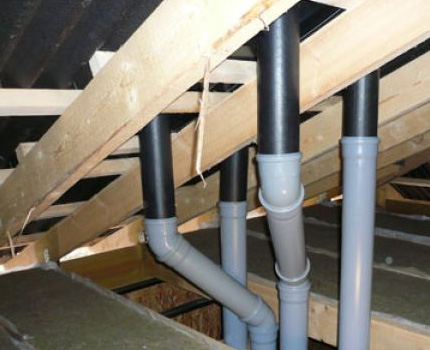
Secondly, the ventilation pipes should protrude above the roof to a certain height, depending on their location. So, the length of the vertical section of the ventilation duct on average should be from 1.5 to 3 meters. If pipes do not fit into the overall design of the house, then ventilation outlets in the roof can be used.
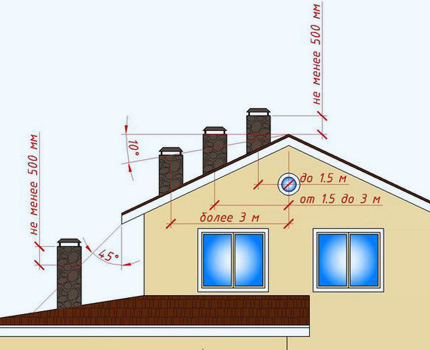
Thirdly, according to the regulations, it is necessary to provide ventilation to the boiler room and the room located above the boiler room. Moreover, the purpose of this room does not matter. It can be either an office, a library, or a bedroom or a living room.
Fourth, it is important to distinguish between the concepts of chimney and ventilation. In the first case, the combustion products enter the channel, and in the second, the exhaust air from the room itself. In no case can these 2 channels be combined into one. This is a gross violation.
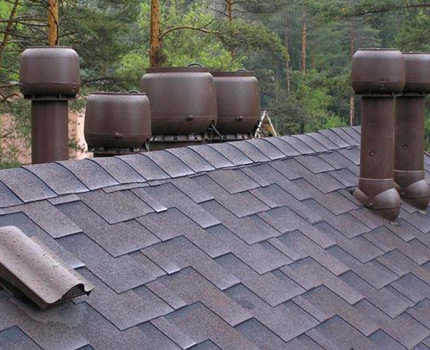
Fifth, in the kitchen you need to provide 2 separate ventilation channels - for hoods and for supply air.The second option is to use a special grille where the air duct is connected and there is a separate hole for air to enter the room. Or a micro ventilated window would be a good way out.
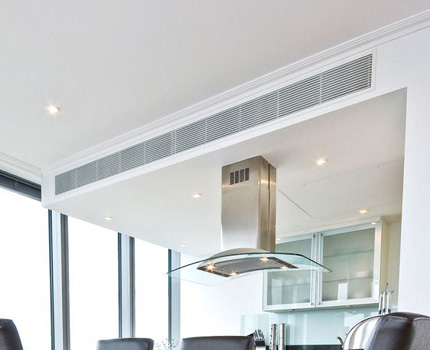
Sixth, if the house has rooms designed for household needs - a dressing room, laundry, pantry, washing and other purposes, then there must definitely be designed ventilation duct. In such rooms, windows through which air could flow in are not provided.
Seventh, when the ventilation duct is laid in the wall, it is important that it is not bearing. It is not recommended to arrange them in external walls - due to the temperature difference, condensation will always form there.
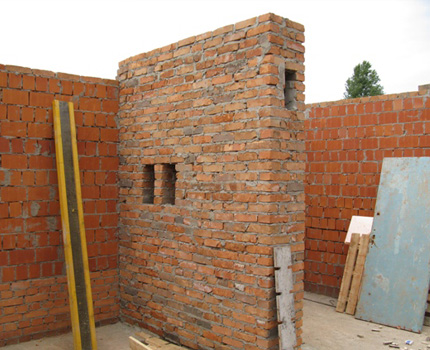
The eighth rule - wooden structures of the ceiling and roof should not adjoin or touch a stone or brick ventilation duct. For a tree, such a neighborhood can be disastrous.
The ninth rule - it is undesirable to use only a window leaf as a supply valve. She's not the best option. A sick nasopharynx in the morning, with a sharp change in weather during the night, will be provided to the owner of the house, sleeping with an open window leaf. This is especially true in the autumn and spring.
The tenth rule - when there is no way to make ventilation ducts in the room, you can put a supply valve by drilling a through hole in the wall. And at the top right under the ceiling, drill a hole for installing an exhaust valve. This option of ventilation of the room will be able to provide the room and its inhabitants with fresh air.
Installation process wall supply valve simple to execute:
Moreover, it is important to consider the location of a private house and the surrounding area. Make holes correctly at a height of 1-2 meters so that dusty air does not penetrate the house. If it is located next to the road, then from this part of the cottage it is not necessary to install supply valves at all.
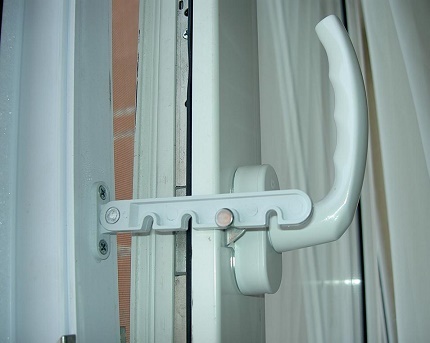
Enhanced ventilation by installing a supply air
If during the design of the house the ventilation system was not given enough attention, if the house was renovated using plastic building materials and decoration, it is enough to modernize the system. There are several ways to solve this problem, for example, installing a wall valve or fans in ducts.
In the photo-example we have proposed, a compact supply ventilation is installed with a breather, which cleans and warms the air flow, is controlled from a smartphone:
Choosing the best ventilation system
Each house is unique. And the ventilation system suitable in a particular case will be different. Of great importance when choosing a system is the area of the house, the number of floors, wall and roof materials. You should also take into account the amount allocated for this.
The larger the area of the house and the more airtight materials used during its construction, the more complicated the system will be. Another point - additional climate control features. The cost of ventilation directly depends on this parameter.
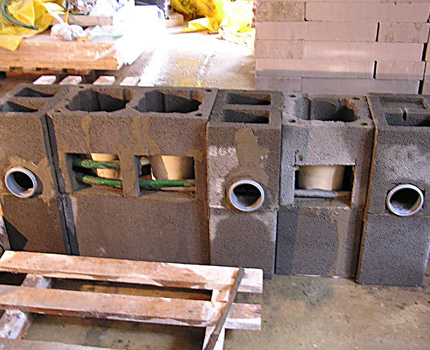
The more functions a ventilation system can perform, the more expensive it will cost. But with a modest budget, you can do without additional features - the influx of fresh air into the house does not depend on this.
You can read more about choosing the type of ventilation system in another popular article our site.
To organize the flow of air use:
- micro-ventilated windows;
- wooden windows. They have natural micro-ventilation, providing an influx of fresh air from the outside;
- supply valve.
Supply valves can be of various shapes and sizes. The materials from which they are made are metal and plastic. As for micro-ventilation in the windows, this option is the most convenient - you do not have to additionally make holes in the walls and buy valves.
To remove air from the premises of a private house, wall shafts are used or laid separate ducts in the kitchen, in the pantry, boiler room and bathroom.It is convenient to install a fan in such channels, which will forcibly rid the room of polluted air.
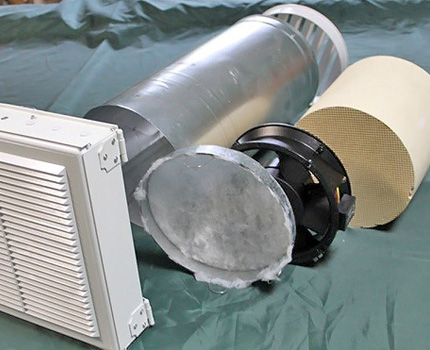
If the area of the house is small, then it is enough to install windows with micro-ventilation, an exhaust hood in the kitchen and ventilation ducts from the boiler room and bathtub. Such a seemingly modest system will completely cope with the ventilation of all the rooms of a country house.
When do I need to invite specialists?
When arranging ventilation ducts in a private house, you can go in two ways:
- invite professionals who will perform all the turnkey;
- deal with all the issues yourself by completing the work on your own.
Each of the options is appropriate for specific conditions. All design options for the ventilation duct system can be divided into traditional and latest ready-made systems. In the first case, you need to select equipment, focusing on the calculations. Here we must not forget about the smallest details that are useful when assembling the system.
In the second case, we are talking about a comprehensive solution from a specific manufacturer. For example, the German Selfwind ventilation system, which is bought as a ready-made kit for a specific area of the house. All components required during assembly are selected. The system itself resembles a collector heating system, only a lot of pipes surround the entire house from the inside.
These flexible plastic ducts with a diameter of 75 mm or 50 mm are drawn into a manifold. They are poured with concrete screed on the floor, and those areas that pass like a circulatory system throughout the house are expertly masked by designers.
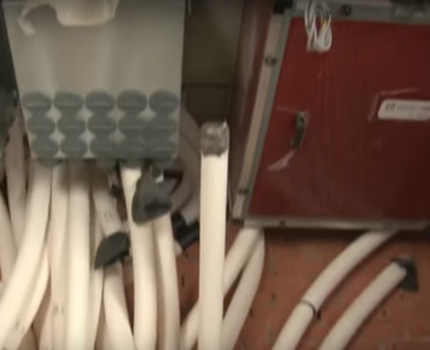
If you choose such a complex ventilation system, costing more than one thousand dollars for a country house with an area of 800 m2 and more, it makes no sense to save on the installation. And it will take a lot of time to arrange such ventilation.
When constructing a house with your own hands “from scratch”, it is not difficult to lay out ventilation shafts from a brick and provide holes for installing supply valves. Subsequently, all sections of the natural ventilation system are formed with special valves, and, if necessary, hoods. This option is relevant for homes up to 250-300 m2.
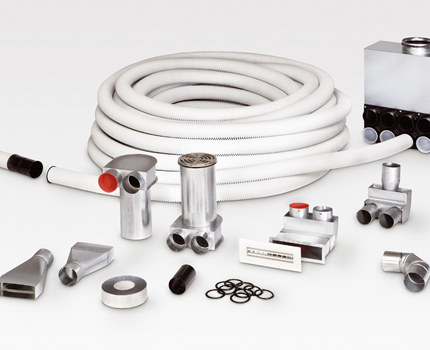
Drawing up a ventilation scheme for the home
The ventilation scheme is made before the start of construction of the house or before the start of major repairs. If this is the first option, then the internal walls of the house that separate the boiler room, kitchen, bathroom and toilet are chosen for the wenchacht device. These rooms are most in need of ventilation.
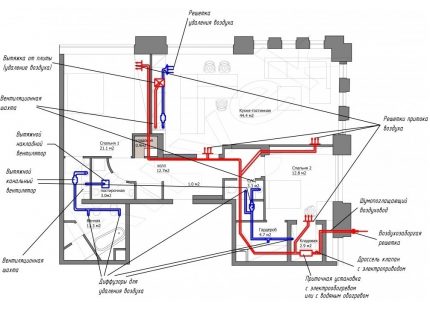
On the diagram, you need to apply the ventilation ducts of the supply and exhaust air, which will pass through the rooms. It is imperative to indicate where the inlet valves, fans, recuperators and other equipment that is provided for in the selected ventilation system will be located.
Based on the drawn up scheme, it is necessary to calculate the power of the units for each room and select the diameters of the ventilation pipes.
Another important point - you should take into account the need for each room in the fresh air in m3.
According to the regulations, different rooms require different amounts of fresh air per hour:
- for the kitchen - 60 m3 with electric stove and 90 m3 with gas;
- for bathrooms –25 m3 in hour;
- with combined bathrooms - 50 m3;
- for offices, children's rooms, living rooms - 3 m3 on 1 m2 area.
For boiler rooms you need to lay a separate ventilation duct. Given the standards, you need to calculate the need for fresh air and choose the appropriate capacity of the equipment, which is able to provide the required air speed. Moreover, it is important to make a margin of 30% so that the system does not work to the limit of its capabilities.
Ventilation duct technology
When there is a plan to equip the ventilation system in the house, it remains to put it into practice. For this, all the components of the future system specified in the previously drawn up scheme are acquired. Each house will have its own characteristics.
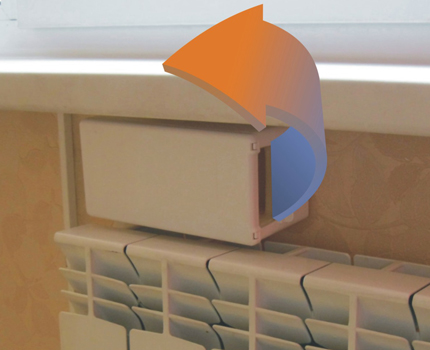
When installing a natural-type system, first the ventshahts are laid out in the wall - separately for the kitchen, furnace / boiler room, bathroom or bath and toilet rooms. Then decorative grilles are installed. In order for these channels to fulfill their role, one must not forget about the permissible height above the roof level.
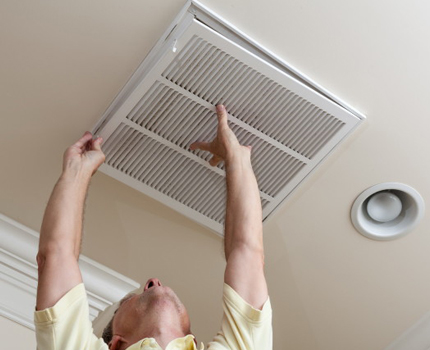
If you want to equip a mechanical or mixed type of ventilation in the house, then you need to make wiring ventilation pipes. An attic space is used for this. When this is not possible, ventilation ducts are arranged under the ceiling of the house. Then they have to disguise in any convenient way.
Supply and exhaust openings in ventilation pipes are made out by air distributors. The receiving and exhaust equipment, if necessary, can be equipped with an electric heating system. If necessary, install non-return valves, carefully treating the joints with sealant.
Ventilation pipes are fastened with clamps or other fasteners provided for these purposes. All joints are tightly sealed. In the future, this will guarantee the excellent operation of the entire system.
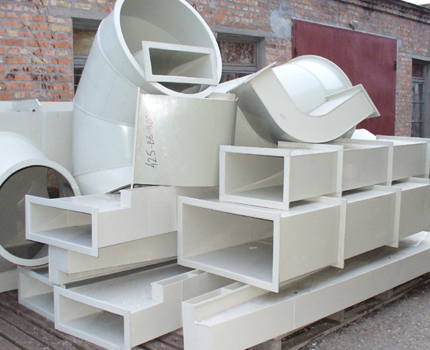
Fans are mounted according to the instructions attached to them. If you intend to install complex systems, then the equipment is installed as recommended by the manufacturer. Otherwise, you may lose warranty service.
The consequences of errors in the device
If the ventilation system is arranged correctly, then the microclimate in each room of the house will be comfortable, regardless of the total area and the number of residents. But often the owners of cottages and country houses of permanent residence are faced with various troubles. This is due to improper air circulation.
Problems faced by the owner of the house without ventilation:
- the windows are crying;
- child and smoke from the kitchen enters the living rooms;
- mold in the bathroom;
- unpleasant odor in all areas of the house;
- if the boiler room is gas, then the gas workers will not accept it without proper arrangement of ventilation ducts.
The combination of all this leads to the fact that residents feel uncomfortable. A lack of fresh air can cause headaches, an increased level of irritability, and a bad mood. Unpleasant odors from the bathrooms and the kitchen also interfere with the comfortable life of all the inhabitants of the house.
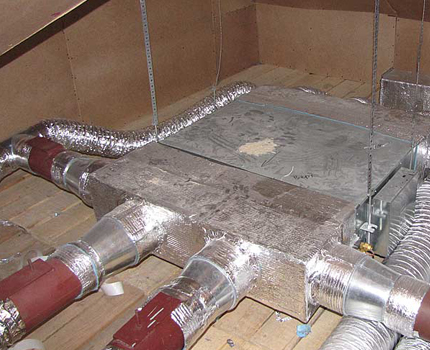
Another unpleasant phenomenon that occurs when the ventilation channels are not properly organized is rollover ventilation. This happens if instead of warm air from the room that should be leaving, cold street air starts to pass.
This problem must be fought. After all, no heating system is able to cope with such heat loss.Here, literally, the owner’s money will actively fly into the ventilation pipe.
To prevent this from happening, the regulations stipulate that the ventilation duct that exhausts the exhaust air from the premises must exit at least 2-3 meters on the roof.
It often happens that the owner does not know through which outlet pipe the inflow occurs. To detect a leak of warm air, you can use a simple method. To do this, taking a lighted candle, you have to go around all the rooms, paying attention to how the flame behaves at the places where the air comes out of the room.
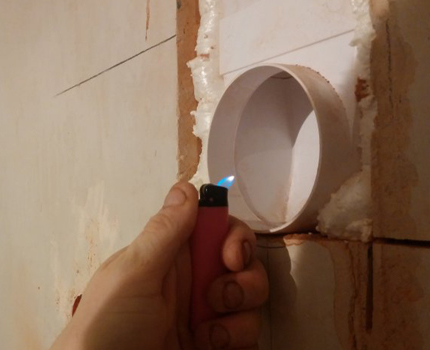
If the flame of a candle draws in, then everything is in order. If it is blown into the room, then the source of unauthorized inflow of street air has been detected and it is necessary to deal with it by taking appropriate measures to eliminate the problem.
Conclusions and useful video on the topic
Video # 1. About the device of natural ventilation in a private house:
Video # 2. Visual aid on the appointment and use of a brick ventilation duct in a country house:
Video # 3. How to make the laying of ventilation ducts from solid brick:
Video # 4. Detailed recommendations on the rules for arranging ventilation in a private house:
Video # 5. About the system of ventilation ducts made of flexible plastic pipes in a country cottage:
Having studied the features of choosing a ventilation system, you can choose the most suitable option for your private home. Is it worth it to equip ventilation ducts on your own or is it better to invite a team of specialists, completely depends on the complexity of the chosen system, the area of the house and personal skills.
If you have suggestions or interesting information on the arrangement of ventilation ducts, you know how to effectively modernize ventilation, please write comments. For their placement after the text of the article there is a block. Here you can ask questions and point out shortcomings.

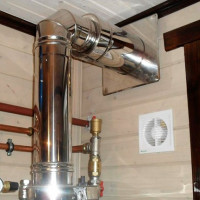 Ventilation for a gas boiler in a private house: arrangement rules
Ventilation for a gas boiler in a private house: arrangement rules 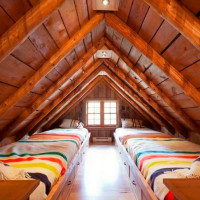 Attic ventilation in a private house: rules and devices for organizing air exchange
Attic ventilation in a private house: rules and devices for organizing air exchange 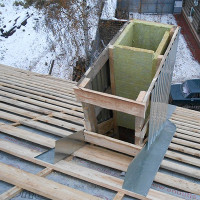 How to make a roof ventilation duct: a detailed construction guide
How to make a roof ventilation duct: a detailed construction guide 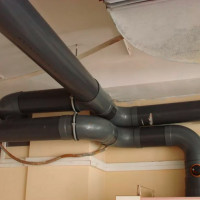 Installation of plastic ventilation ducts: a guide to the construction of a system of polymer pipes
Installation of plastic ventilation ducts: a guide to the construction of a system of polymer pipes 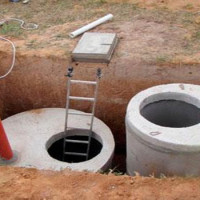 Ventilation of a septic tank in a private house: is it needed + tips for arranging
Ventilation of a septic tank in a private house: is it needed + tips for arranging 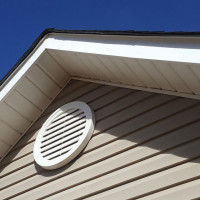 Ventilation in a private house through the pediment: arrangement options
Ventilation in a private house through the pediment: arrangement options  How much does it cost to connect gas to a private house: the price of organizing gas supply
How much does it cost to connect gas to a private house: the price of organizing gas supply  The best washing machines with dryer: model rating and customer tips
The best washing machines with dryer: model rating and customer tips  What is the color temperature of light and the nuances of choosing the temperature of the lamps to suit your needs
What is the color temperature of light and the nuances of choosing the temperature of the lamps to suit your needs  Replacement of a geyser in an apartment: replacement paperwork + basic norms and requirements
Replacement of a geyser in an apartment: replacement paperwork + basic norms and requirements
I read, and such an interesting question arose: for example, we do ventilation in a private house. A private house is, as a rule, a suburban territory, a large number of all living creatures, from insects (ants, ticks, bees, etc.) to rodents and birds. What is the likelihood that, for example, a colony of ants or wasps can settle in ventilation? Or the likelihood of a mouse or bird climbing into it? And it’s also interesting how often it is necessary to clean ventilation systems, because in theory dust and other garbage accumulate there.
Natural issues for the ventilation of a private house. I can say right away about wasps - these insects settle absolutely everywhere, especially in the attic, from there they can easily migrate to ventilation ducts.
The bird count is a bit different story, therefore, a special design is needed, and such a solution will also prevent the ingress of bulky debris into the ventilation pipe. Mount the visor with extra protection in the form of a grill with small holes.
In this case, it will be necessary to clean the ventilation no more than once a year.Depending on the complexity of the design of the ventilation ducts, options for cleaning them are selected. On the premises, the house can be cleaned with a vacuum cleaner, and from the street already with special brushes.